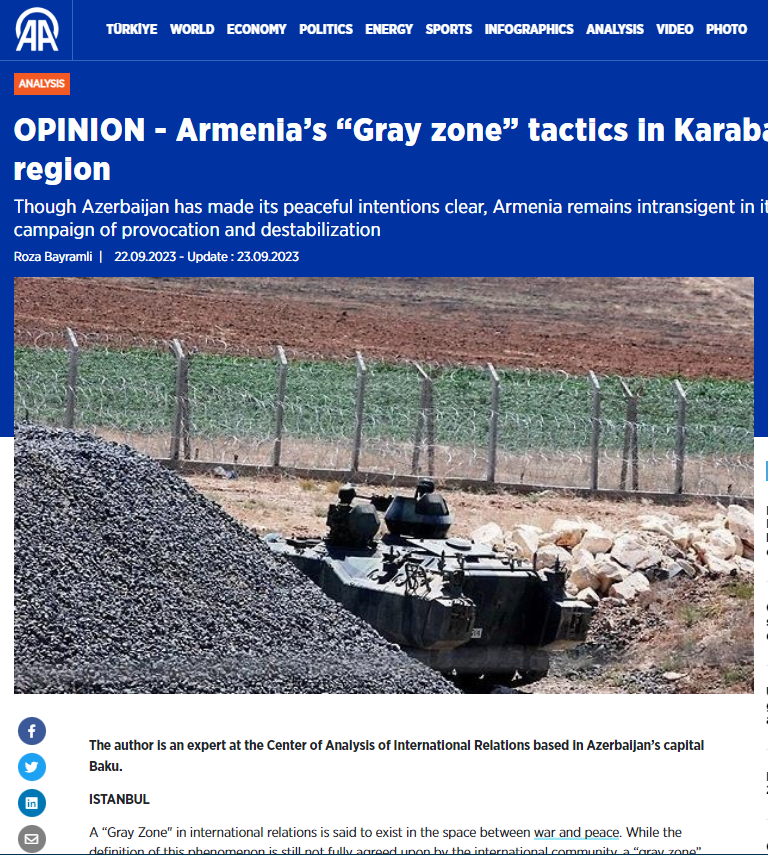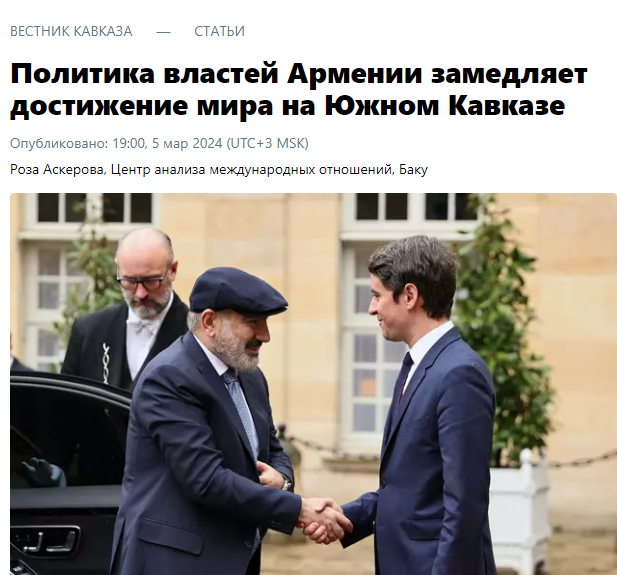A “Gray Zone" in international relations is said to exist in the space between war and peace. While the definition of this phenomenon is still not fully agreed upon by the international community, a “gray zone” emerges when a nation instigates discreet campaigns of aggression by non-military and paramilitary state and non-state agents that do not quite meet the threshold of open armed conflict. This murky intermediary phase gives rise to a variety of economically and socially hostile tactics, from cyberattacks and disinformation campaigns to mercenary operations and targeted assassinations, aiming to disrupt, destabilize, weaken, or intimidate an adversary by exploiting any vulnerabilities of the target state.
It can be argued that “gray zones” have always been a part of international competition – superpowers hounded each other through proxy wars, destabilizing insurgencies, and legal and information warfare for centuries. But with the advent of the nuclear age, as the risks of escalation to open war have risen to include the threat of total extinction, countries began to advance their national goals almost exclusively through carefully and covertly carried out small-scale acts of aggression.
Gray zone tactics
During the Cold War, both Eastern and Western blocs primarily relied on ploys typical of the “gray zone.” Since then, with the advance of globalization and the emergence of the Internet, and consequently social media, the available means and attack vectors have multiplied exponentially. The potential for abuse in the interconnected and transparent modernity is near infinite.
The Cove, the Australian Army’s professional military education platform, lists as contemporary “gray zone” activities interference in the internal politics of the state, media manipulation, dissemination of disinformation, violation of the sovereign borders of the state, cyber intrusions into government and industry computer networks, espionage, foreign interference, and hostile rhetoric in diplomacy. The international policies of China and Russia provide a plethora of examples of such tactics.
In February-March 2014, the Russian Federation successfully carried out a massive “gray zone” campaign of significant economic pressure, dissemination of disinformation, manipulation of social networks and the media, bribery of key persons, and diplomatic maneuvering prior to ever deploying boots on the ground in the annexation of Crimea.
UK-based analyst and writer on European security issues Ben Nimmo described Russia’s “gray zone” policy in Crimea as a “4D model,” which stands for: [3]
1. Dismiss: Weakening and vilifying the target, denying the truth and discrediting the criticism,
2. Distort: Falsifying the facts and fabricating evidence,
3. Distract: Responding to accusations of aggression by counter-accusations against critics (also known as “whataboutsim”),
4. Dismay: Threatening the opposition with extreme retaliation and disastrous consequences.
Gray zone tactics are also exemplified by the Chinese People’s Liberation Army's "unrestricted war" and "three warfares" strategies, which blur the lines between war and peace by promoting non-military political, legal, and social means of achieving national goals.
Armenian ‘grey zone’ tactics
After a brutal war in the early 1990s, for 30 years the Karabakh region of the Republic of Azerbaijan was under the occupation of Armenia, and an estimated one million ethnic Azerbaijanis were forced from their homes while the Armenian side laid mines on thousands of square miles of occupied Azerbaijani territory around a small community of ethnic Armenians connected to the Armenian Republic by a single road called “Lachin-Khankendi.” A total of 3,385 victims of Armenian mines have been registered by the Mine Action Agency of the Republic of Azerbaijan since 1991.
The end of the second Karabakh war in November 2020 should have meant the withdrawal of the Armenian military and the de-mining of the Karabakh region of Azerbaijan. Instead, since the end of the war the list of victims of Armenian mine terror grew by over 300 people – 251 injured and 55 killed – as Armenian paramilitaries living in the Karabakh region of the Republic of Azerbaijan continue to lay traps along the perimeter of the liberated territory as reported by Hikmet Hajiyev, adviser to the Azerbaijan president. This systematic policy of terror, further evidenced by the refusal by the Armenian side to provide a complete map of the minefields to Azerbaijan, is but one manifestation of the Armenian version of “gray zone” tactics.
At the end of the 44-day war, Azerbaijan regained control over most of the previously occupied territories, and the prime minister of Armenia publicly recognized the country’s territorial integrity. Thus, Armenians living in the Karabakh region of the Republic of Azerbaijan have become full legal citizens of the Republic. However, integration of ethnic Armenians into the political, economic, and social spectrum of life in Azerbaijan has proven to be impossible as long as the Armenian side continues its persistent “gray zone” aggressions.
Armenian disinformation campaign
As part of a disinformation campaign, starting in June 2023 the Armenians have been complaining to the international community about the alleged “blockade” making the delivery of food into the region “impossible,” leaving out the fact that the entry of aid from Azerbaijan had been inhibited by Armenian residents of Karabakh obstructing the Aghdam-Khankendi road with concrete blocks. Despite this, on Aug. 29, the Azerbaijan Red Crescent Society sent humanitarian aid from Baku with 40 tons of flour products to meet the needs of people of Armenian origin living in Karabakh along the Aghdam-Khankendi road only to be rebuffed again.
The local Armenians, misled by the subversive rhetoric of Armenian leadership, categorically reject offered relief efforts and refuse direct negotiations with the Azerbaijani government. Emboldened by nationalist propaganda, the Armenian residents also violated the agreement that the Agdam-Khankendi and Lachin-Khankendi roads would be opened simultaneously this Sept. 1.
Azerbaijan has repeatedly stated that the Armenian residents of Karabakh are citizens of the country, and that it would not like to politicize the issue of the delivery of humanitarian aid. At the same time, Azerbaijan will not allow separatism within its borders.
The integration of Armenian residents of Karabakh into the populace of Azerbaijan is an important step towards establishing lasting peace in the region. Armenia’s interference with the peace processes through destructive propaganda instead needlessly exacerbates the tensions in the region. Before the first Karabakh war, Azerbaijanis and Armenians were historically documented to have lived in peace and harmony as neighbors in Karabakh. Russians, Georgians, and representatives of dozens of national minorities currently live in Azerbaijan as full-fledged members of society, and people of Azerbaijan are ready to welcome Armenians of Karabakh back into the fold. Furthermore, the use of the Agdam-Khankendi road, an effective route for logistics and transport, would give the Armenians of Karabakh access to all markets of Azerbaijan, as well as neighboring countries.
Though Azerbaijan has repeatedly made its intentions clear to establish peace at the border, Armenia remains intransigent in its campaign of provocation and destabilization in the treacherous “gray zone."
https://www.aa.com.tr/en/analysis/opinion-armenia-s-gray-zone-tactics-in-karabakh-region/2998793







